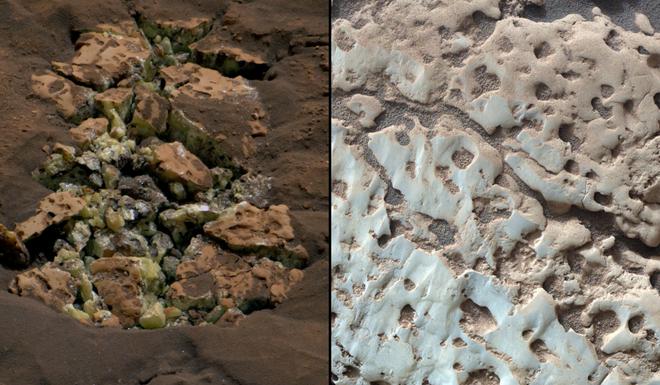Published 23:55 IST, July 20th 2024
"An Oasis in the Desert": NASA's Curiosity Rover Discovers Unexpected Field of Sulphur Rocks on Mars
NASA’s Curiosity Rover found pure sulphur rocks on Mars, revealing unexpected insights into the planet's geological history and conditions.

“We used to look up at the sky and wonder at our place in the stars. Now we just look down, and worry about our place in the dirt. Mankind was born on Earth. It was never meant to die here.” These words from the movie Interstellar always question the existence of humans outside this blue planet and time after time we have tried to find potential places ahead of the horizon to set the species.
Mars, which is our neighbour, has always been the first choice and several exploration projects are still going on this planet and after years of hardwork and patience humans have finally found a little sign.
For nearly a decade, NASA’s Curiosity Rover has been diligently exploring the foothills of Mount Sharp on Mars, revealing fascinating insights into the planet’s potential for habitability. Recently, this four-legged explorer stumbled upon a surprising find: a field of rocks made of pure sulphur.

According to NASA, the discovery came when a rock Curiosity recently drove over cracked open, revealing bright yellow sulphur crystals. This finding is particularly intriguing as it marks the first time pure sulphur has been identified by the rover.
Since October of the previous year, Curiosity has been investigating a region rich in sulphates—sulphur-based salts formed through water evaporation. The discovery of these sulphur rocks is just one of many revelations made by the rover as it navigates the Gediz Vallis channel, a deep groove descending from the towering 5 km high Mount Sharp.
NASA’s mission with Curiosity is to analyse the Martian terrain to assess its potential to support microbial life. Each layer of Mount Sharp provides valuable information about Mars' geological history. The Gediz Vallis channel was a key target for the rover's mission, aimed at understanding the roles of ancient floods and landslides in shaping the planet’s surface.
Recent clues suggest that both floods and landslides played significant roles in forming the debris mounds observed by Curiosity. Some of these mounds are the result of violent water flow, while others appear to have been caused by local landslides.
Previously, sulphur rocks discovered by Curiosity were too small and brittle to be drilled. However, the team recently encountered a substantial rock, named ‘Mammoth Lakes’, which they were able to safely drill into.
“Finding a field of stones made of pure sulphur is is like finding an oasis in the desert,” said Ashwin Nasavada, a scientist at NASA’s Jet Propulsion Laboratory in Southern California. “It shouldn’t be there, so now we have to explain it. Discovering strange and unexpected things is what makes planetary exploration so exciting.”
As Curiosity continues its journey, scientists remain eager to unravel the mysteries of Mars, driven by the thrill of unexpected discoveries and the potential for new insights into the Red Planet's past.
Updated 23:55 IST, July 20th 2024


